
On Friday 18 October 2019, experts from the Johns Hopkins Center for Health Security, the World Economic Forum and the Bill and Melinda Gates Foundation hosted a tabletop exercise at the Pierre Hotel in New York City:
Event 201 was a 3.5-hour pandemic tabletop exercise that simulated a series of dramatic, scenario-based facilitated discussions, confronting difficult, true-to-life dilemmas associated with response to a hypothetical, but scientifically plausible, pandemic. 15 global business, government, and public health leaders were players in the simulation exercise that highlighted unresolved real-world policy and economic issues that could be solved with sufficient political will, financial investment, and attention now and in the future. (Center for Health Security)
Ten weeks later, on 31 December, medical authorities in China issued an epidemiologic alert, alleging that several cases of pneumonia of unknown etiology in Wuhan City, Hubei Province, were linked to an outbreak of a SARS-like epidemic caused by a novel coronavirus. And ten weeks after that, on 11 March 2020, the WHO declared this outbreak a pandemic. Either this timing was just an extraordinary coincidence or Event 201 was some sort of dry run for the real thing. If you do not believe in coincidences, then it is hard not to suspect that the COVID-19 pandemic was not an act of nature.
Seven Recommendations
In the wake of Event 201, the participants issued seven recommendations. The first six emphasize the importance of public-private partnerships, of managing the distribution of vaccines and other medical resources, of supporting trade, travel and transport, of investing in countermeasures such as the development of vaccines, and of preparing properly for the inevitable economic burdens. Each of these measures would be reflected in the actual response to the COVID-19 pandemic.
1: Governments, international organizations, and businesses should plan now for how essential corporate capabilities will be utilized during a large-scale pandemic.
The close cooperation between governments and wealthy organizations, both private and public-private—eg the Bill and Melinda Gates Foundation, the World Economic Forum, the Johns Hopkins Center for Health Security, the Global Alliance for Vaccines and Immunization (GAVI), the Coalition for Epidemic Preparedness Innovations (CEPI)—has been particularly prominent during the pandemic. As Iain Davis points out in his book Pseudopandemic, the COVID-19 pandemic could never have been managed without the assistance of several prominent public-private partnerships.
2: Industry, national governments, and international organizations should work together to enhance internationally held stockpiles of medical countermeasures (MCMs) to enable rapid and equitable distribution during a severe pandemic.
International cooperation along these lines has been most noticeable during the roll-out of the vaccines. In April 2020, GAVI, CEPI and the WHO established COVAX, or COVID-19 Vaccines Global Access, a worldwide initiative to ensure equitable access to the vaccines. Here in Ireland, COVAX facilitated the donation of 335,500 doses of the AstraZeneca vaccine to Uganda in October 2021, and the donation of 500,000 doses of the Janssen vaccine to Nigeria in November. These two consignments were part of the 1.3 million doses which the Irish government was committed to sharing with other nations.
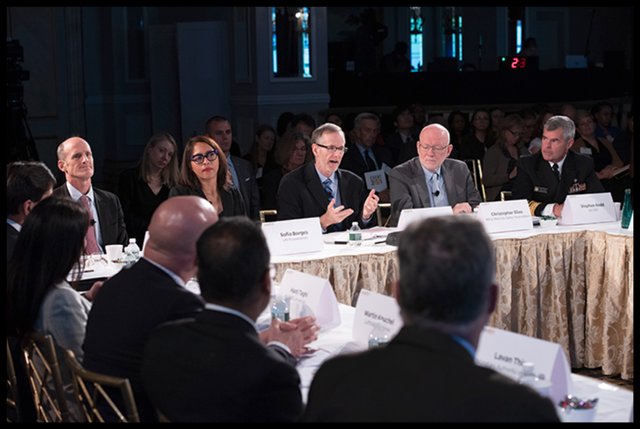
3: Countries, international organizations, and global transportation companies should work together to maintain travel and trade during severe pandemics. Travel and trade are essential to the global economy as well as to national and even local economies, and they should be maintained even in the face of a pandemic.
One of the hallmarks of the COVID-19 pandemic is the way in which public transport has been largely maintained at both national and international level. Travel between states and even within states has suffered from some restrictions, but outright travel bans have been relatively rare. Cross-border travel generally requires proof of vaccination or of a recent negative covid test, and the traveller may have to spend some time in quarantine before being free to move around. Here in Ireland, shops and supermarkets continued to be supplied with adequate stocks throughout 2020, when, supposedly, we were in the grip of a deadly pandemic. Some shortages have occurred recently, but they have been of minor significance. Public transport was maintained throughout the pandemic, but maximum capacity was reduced to facilitate social distancing.
4: Governments should provide more resources and support for the development and surge manufacturing of vaccines, therapeutics, and diagnostics that will be needed during a severe pandemic.
One of the most striking features of the COVID-19 pandemic is the “surge” to develop and produce safe and effective vaccines in as short a time as possible. Such was the mad rush to achieve this that the public-private partnership established by the US government to facilitate and accelerate the development, manufacturing, and distribution of vaccines and other medical resources was given the ludicrous name of Operation Warp Speed. Is it significant that this name was borrowed from science-fiction? The unprecedented speed with which the vaccines were developed and rolled out does seem to belong to the world of science-fiction.
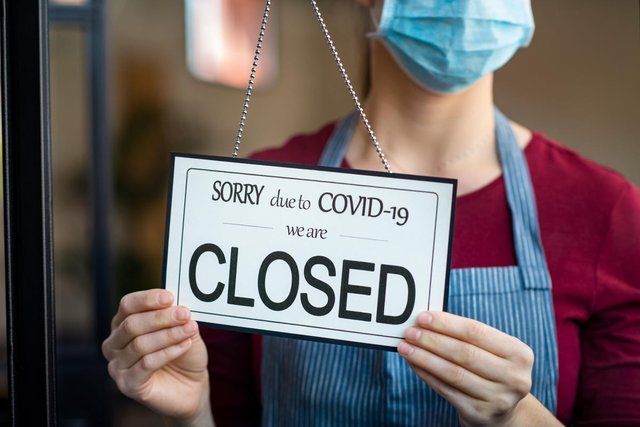
5: Global business should recognize the economic burden of pandemics and fight for stronger preparedness.
As this recommendation was issued on 18 October 2019, while COVID-19 was declared a pandemic by the WHO on 11 March 2020, it is not surprising that most businesses were wholly unprepared for the impact of a global pandemic. This left most small and medium businesses entirely dependent on the state for survival. Many have not survived.
6: International organizations should prioritize reducing economic impacts of epidemics and pandemics.
The way in which governments have prioritized some businesses over others makes no epidemiological sense. Supermarkets, newsagents, fast-food restaurants, coffee-shops, banks, farms, television, radio, newspapers, and government have been allowed to remain open, while schools, gyms, swimming pools, libraries, cinemas, theatres, hairdressers, and pubs have been shut down. These lockdowns, which have had no positive effects on hospitalizations or death rates, have only been possible at all because of furlough payments. Governments across the world have borrowed heavily so that they can pay millions of people to sit at home doing nothing during the pandemic. This will undoubtedly result in a huge economic burden falling on the shoulders of generations that have not yet been born.
7: Governments and the private sector should assign a greater priority to developing methods to combat mis- and disinformation prior to the next pandemic response.
Of the seven recommendations this is the one which has been followed through with the greatest of enthusiasm:
Governments will need to partner with traditional and social media companies to research and develop nimble approaches to countering misinformation. This will require developing the ability to flood media with fast, accurate, and consistent information. Public health authorities should work with private employers and trusted community leaders such as faith leaders, to promulgate factual information to employees and citizens. Trusted, influential private-sector employers should create the capacity to readily and reliably augment public messaging, manage rumors and misinformation, and amplify credible information to support emergency public communications. National public health agencies should work in close collaboration with WHO to create the capability to rapidly develop and release consistent health messages. For their part, media companies should commit to ensuring that authoritative messages are prioritized and that false messages are suppressed including though the use of technology.
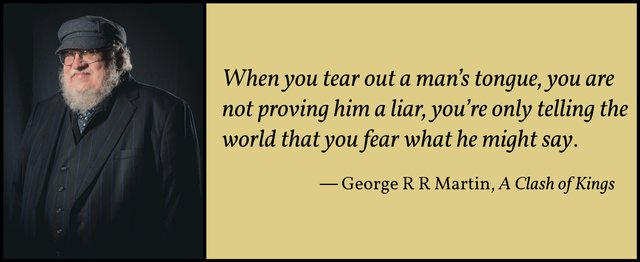
This is precisely what happened during the COVID-19 pandemic—if we accept that any information which contradicted the WHO’s narrative was either misinformation or disinformation no matter how factual it might actually have been. Before this particular pandemic, it was common for people to “seek a second opinion” if they were not confident in the diagnosis provided by their doctor. It was even common for medical practitioners to recommend this course of action to their patients. But during the covid-19 pandemic, second opinions were deemed misinformation or disinformation and were actively suppressed. Social media platforms—eg YouTube, Facebook, Twitter, Wikimedia Foundation—went out of their way to censor alternative opinions and to ban content creators who refused to toe the line.
Among those blacklisted by the mainstream media was the virologist and immunologist Robert Malone, the inventor of the mRNA technology being used by Pfizer and Moderna in their covid vaccines. After speaking out against the official narrative, Malone was literally written out of history: all mention of him was subsequently removed from the Wikipedia article on mRNA. His claim to have invented the technology—universally accepted before his controversial comments—is now routinely questioned or even outright denied.
Another victim of censorship for questioning the safety and effectiveness of the covid vaccines is the pharmacologist Michael Yeadon, who served as the chief scientist and vice-president of the allergy and respiratory research division of Pfizer. Now he is described as “a hero of Covid conspiracy theorists” and “a key figure in the antivax movement”, and is routinely disparaged by the mainstream media.
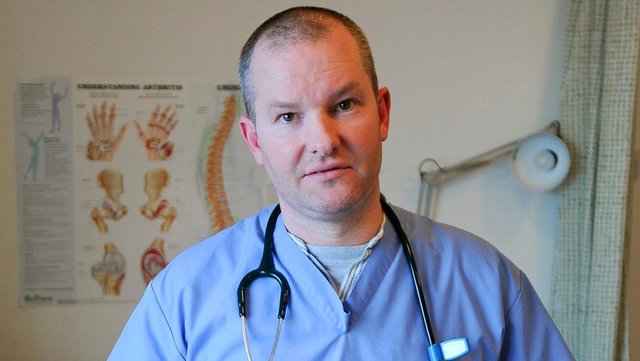
In Ireland, Dr Marcus de Brun, who resigned from the Irish Medical Council in protest at the mishandling of the covid crisis, was obliged to discontinue his private medical practice when the Council threatened to suspend his license on account of his anti-mask and anti-lockdown views (Irish Times 8 October 2020).
For the past twenty-two months, the public has been repeatedly warned not to go online seeking alternative opinions, but to do what the WHO or their own government tells them to do. In New Zealand, the Prime Minister Jacinda Ardern even went so far as to say the following without the slightest hint of irony:
I’ve been watching for some days—and this is not unique to New Zealand—that, in the midst of what is a global issue, as you would expect, there are a number of rumours that circulate. I am present on social media; I see it myself. I cannot go round and individually dismiss every single rumour I see, as tempted as I might be. So, instead, I want to send a clear message to the New Zealand public: we will share with you the most up-to-date information daily. You can trust us as a source of that information. You can also trust the Director-General of Health and the Ministry of Health. For that information, do feel free to visit at any time—to clarify any rumour you may hear—the covid19.govt.nz website. Otherwise, dismiss anything else. We will continue to be your single source of truth. We’ll provide information frequently. We will share everything we can. Everything else you see—a grain of salt. (New Zealand Parliament 2 September 2020)

Revelation of the Method or Just Sensible Preparation?
Revelation of the Method is a phrase used by “conspiracy theorists” to describe a technique which, it is alleged, is employed by secret societies and elites when engaging in large-scale experiments of social engineering. This technique consists in revealing to one’s victims or human guinea pigs what it is that is being done to them, but in such a way that it is not at all obvious that there is any link between the revelation and reality.
Why would social engineers employ such a technique? There are two common explanations, one psychological, the other parapsychological.
The psychological explanation is that Revelation of the Method is a form of social conditioning. If the public have been primed—perhaps only on an unconscious level—to expect the social experiment, they are more likely to accept it as a natural event when it occurs. According to this theory, the technique helps to enhance the effects of the experiment, as the public do not resist what they have been preprogrammed to expect and accept. If this theory is correct, Revelation of the Method is a form of predictive programming, and ought to take place shortly before the actual event. It is a weapon of psychological warfare, but disguised in such a way that the victims never realize that they are under attack.
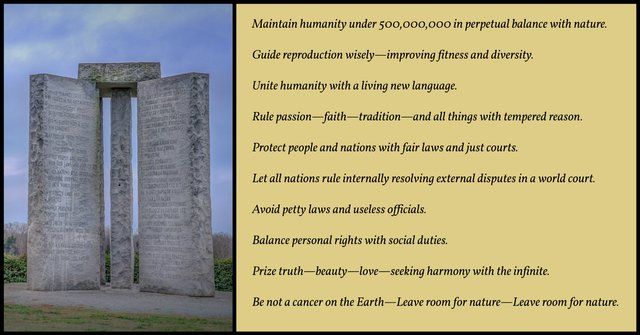
The parapsychological explanation belongs to the world of the occult. According to this theory, the members of a secret society must reveal to their victims exactly what they intend to do to them. If their victims then allow themselves to be victimized, the members of the secret society are absolved from all guilt and are, therefore, immune from repercussions—“bad karma”. It is not their responsibility to interpret for their victims the signs and symbols used in the Revelation of the Method. If their victims cannot see the truth when it is presented to them, they are the ones at fault. In the classic movie The Wicker Man (1973), the sacrificial victim, Sergeant Neil Howie (played by Edward Woodward), must come to the place of sacrifice of his own volition. He must walk into the trap of his own free will even though his captors have forewarned him of the existence of the trap.
Needless to remark, anyone who thinks that Event 201 was an example of Revelation of the Method—a rehearsal for the real thing—and that covid-19 was more “plandemic” than pandemic is either ignored by the mainstream media or portrayed by them as a crackpot conspiracy theorist. On the few occasions on which the so-called fact checkers have addressed this claim, they have attacked it on three fronts:
Event 201 got some things wrong.
Event 201 failed to predict some things.
Every instance of Event 201 accurately predicting the future can be easily explained as educated guesses being made by experts in the field.

It is even claimed that Event 201 was neither a conspiracy nor a coincidence:
As for the timing of the event, this isn’t just simple coincidence, nor is it a sign that, somehow, the organisers knew about this specific coronavirus before it was reported. It’s more that the reason for running these exercises reflects what the scientific community knows about pandemics. Johns Hopkins said at the time that “the world has seen a growing number of epidemic events” and “experts agree that it is only a matter of time before one of these epidemics becomes global.” As well as Event 201 last year, it also ran a similar exercise called Clade X the year before which simulated the impact of a fictional virus with “flu-like symptoms”. As for why the organisers modelled the impacts of a coronavirus as opposed to any other disease, again this isn’t a result of conspiracy or coincidence but expertise. For one, the world has seen recent outbreaks of coronaviruses such as MERS and SARS, so it’s a relevant type of virus to model. And because coronaviruses are particularly good at evolving, scientists have previously warned that they are contenders for pandemics. (Abbas Panjwani)
If the perfect timing of Event 201 was not a coincidence, then it was a prediction—and an eerily accurate one, at that. Once you have ruled out both conspiracy and coincidence, all you are left with is prophecy.
What makes Event 201 suspicious
The three principal participants in Event 201 have been at the forefront of the COVID-19 pandemic: The Johns Hopkins Center for Health Security, the World Economic Forum, and the Bill and Melinda Gates Foundation.
Event 201 took place just weeks before the first alleged cases of COVID-19 in Wuhan, China.
Event 201 simulated an outbreak of a SARS-like pandemic caused by a novel coronavirus just weeks before an alleged outbreak of a SARS-like pandemic caused by a novel coronavirus.
Several of the recommendations made by Event 201 were subsequently implemented across the globe during the COVID-19 pandemic even though there was no science to back them up and they had never before been recommended as appropriate responses to a global pandemic.
In Event 201, the novel coronavirus passes from bats to pigs to humans. This is precisely the pathway by which a deadly virus infects humans in Steven Soderbergh’s movie Contagion, which, as we saw in the last article, has many of the hallmarks of predictive programming. In the early months of the COVID-19 pandemic, speculation was rife that a bat had been the source of the pathogen even though there was never any actual scientific evidence that this had been the case.

Is all of this nothing more than a coincidence—simply the result of educated guesses and sensible planning made by experts in the field? Or is Event 201 proof that the COVID-19 pandemic was a “plandemic”? He who is not a conspiracy theorist is doomed to be a coincidence theorist.
In isolation, it would be easy to dismiss the timing of Event 201 as a coincidence. But was Event 201 an isolated case? In the next article, we will examine some more alleged coincidences surrounding the covid-19 pandemic.
And that’s a good place to stop.
References
- Iain Davis, Pseudopandemic: New Normal Technocracy, Iain Davis, Online (2021)
Image Credits
- COVID-19 Poster: © 2021 Dublin Region Homeless Executive, Fair Use
- Event 201: © Center for Health Security, Fair Use
- Half Of Small Retailers May Be Forced Out Of Business: Forbes, 7 December 2020, © Rido81, Fair Use
- Censorship: © Henry Söderlund (photographer), Creative Commons License
- Dr Marcus de Brun: © Damien Eagers (photographer), Fair Use
- Jacinda Ardern, Prime Minister of New Zealand: © 2021 Sky UK, Fair Use
- The Georgia Guidestones: © Dina Eric (photographer), Creative Commons License
- The Wicker Man (1973): © Allstar/British Lion/StudioCanal, Fair Use
- Nothing to See Here: © , Fair Use
Online Resources
- Event 201
- RIP.ie
- Central Statistics Office (CSO)
- Northern Ireland Statistics and Research Agency (NISRA)
- Irish Government Updates on Covid-19
- Northern Ireland Covid-19 Statistics
- The CIA’s World Factbook
- EUROMOMO
- Our World in Data
- Rational Ground
